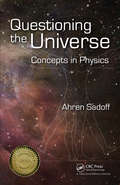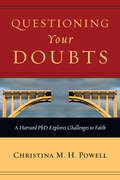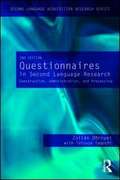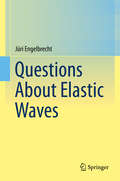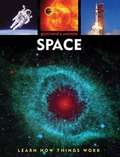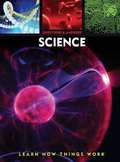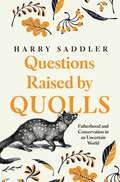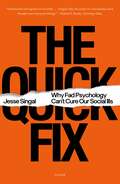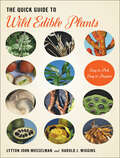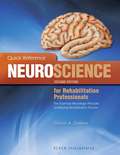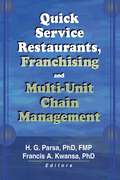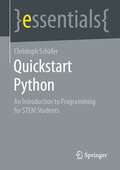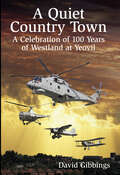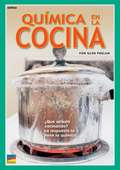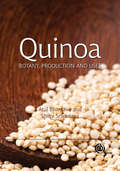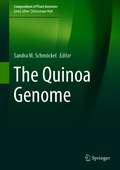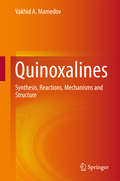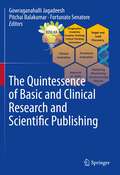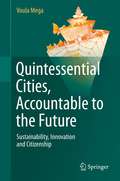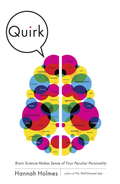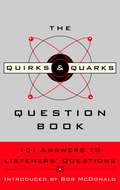- Table View
- List View
Questioning the Universe: Concepts in Physics (Discovering Physics)
by Ahren SadoffWINNER 2009 CHOICE AWARD OUTSTANDING ACADEMIC TITLE! The typical introduction to physics leaves readers with the impression that physics is about 30 different, unconnected topics such as motion, forces, gravity, electricity, light, heat, energy, and atoms. More often than not, these readers are left to conclude that physics is mostly about boring,
Questioning Your Doubts: A Harvard PhD Explores Challenges to Faith
by Christina M. PowellHow can we know if God is real? Does God truly care about us? Why does God create people he knows will reject him? Why did God allow my friend to become a rape victim? Should I switch jobs? Is this person the one I should marry? If you have pondered these doubts, you are not alone. Sometimes we have intellectual questions about the plausibility of God. Other times we go through difficult life experiences that cause us to question our faith. Sometimes we simply struggle feeling confident with day-to-day decisions. Christina Powell knows what it's like to grapple seriously with challenges to faith. A trained scientist and cancer researcher, she struggled with the mysterious claims of a God who exists beyond what the scientific method could detect. Using personal stories from her own life, she explores how faith can be rooted in rationality, knowledge and facts, while coming to recognize the limits of science in evaluating matters of faith. Asking good questions can help us clarify and refine our faith. We can think critically about our doubts and learn to discern the true and the good. Powell probes the hidden factors that fuel our doubts to help us move beyond skepticism, disillusionment or painful life circumstances. We can live deeper into our questions in the context of Christian community. Ultimately we can work through challenges to faith and find a renewed confidence in our beliefs. It's okay to question your faith. But don't stop there. Question your doubts as well.
Questionnaires in Second Language Research: Construction, Administration, and Processing
by Zoltan Dornyei Tatsuya TaguchiQuestionnaires in Second Language Research: Construction, Administration, and Processing is the first guide in the second language field devoted to the question of how to produce and use questionnaires as reliable and valid research instruments. It offers a thorough overview of the theory of questionnaire design, administration, and processing, made accessible by concrete, real-life second language research applications. This Second Edition features a new chapter on how an actual scientific instrument was developed using the theoretical guidelines in the book, and new sections on translating questionnaires and collecting survey data on the Internet. Researchers and students in second language studies, applied linguistics, and TESOL programs will find this book invaluable, and it can also be used as a textbook for courses in quantitative research methodology and survey research in linguistics, psychology, and education departments.
Questions About Elastic Waves
by Jüri EngelbrechtThis book addresses the modelling of mechanical waves by asking the right questions about them and trying to find suitable answers. The questions follow the analytical sequence from elementary understandings to complicated cases, following a step-by-step path towards increased knowledge. The focus is on waves in elastic solids, although some examples also concern non-conservative cases for the sake of completeness. Special attention is paid to the understanding of the influence of microstructure, nonlinearity and internal variables in continua. With the help of many mathematical models for describing waves, physical phenomena concerning wave dispersion, nonlinear effects, emergence of solitary waves, scales and hierarchies of waves as well as the governing physical parameters are analysed. Also, the energy balance in waves and non-conservative models with energy influx are discussed. Finally, all answers are interwoven into the canvas of complexity.
Questions and Answers: About Space
by CapellaSPACE is full of incredible images and mind-blowing facts about the solar system, galaxies, satellites, and much more! Readers will be fascinated to learn about everything from shooting stars to space travel. Is it possible for humans to live in space? How many starts are there in the universe? How did the planets get their names? SPACE has the answers to all of these questions and many more!
Questions and Answers, Science: Learn How Things Work
by Ella Fern Fiona Tulloch Alex WoolfQuestion and answer format covering: Origin of life, matter, light, sound, heat, electricity, magnets, forces and motion, land, air, and water transport. Detailed explanations and beautiful illustrations. Reading level 4th grade and up.
Questions Raised by Quolls
by Harry SadlerQuestions Raised By Quolls is an eloquent examination of extinction and conservation set against the backdrop of global climate change. From his own family lineage, Harry reveals how the prosperity of the human race runs parallel with the decline of the natural world. Evocative and challenging, this eulogy to lost species will force you to question your place in the vast interconnected web of life.
The Quick Fix: Why Fad Psychology Can't Cure Our Social Ills
by Jesse SingalAn investigative journalist exposes the many holes in today’s bestselling behavioral science, and argues that the trendy, TED-Talk-friendly psychological interventions that are so in vogue at the moment will never be enough to truly address social injustice and inequality.With their viral TED talks, bestselling books, and counter-intuitive remedies for complicated problems, psychologists and other social scientists have become the reigning thinkers of our time. Grit and “power posing” promised to help overcome entrenched inequalities in schools and the workplace; the Army spent hundreds of millions of dollars on a positive psychology intervention geared at preventing PTSD in its combat soldiers; and the implicit association test swept the nation on the strength of the claim that it can reveal unconscious biases and reduce racism in police departments and human resources departments. But what if much of the science underlying these blockbuster ideas is dubious or fallacious? What if Americans’ longstanding preference for simplistic self-help platitudes is exerting a pernicious influence on the way behavioral science is communicated and even funded, leading respected academics and the media astray? In The Quick Fix, Jesse Singal examines the most influential ideas of recent decades and the shaky science that supports them. He begins with the California legislator who introduced self-esteem into classrooms around the country in the 1980s and the Princeton political scientist who warned of an epidemic of youthful “superpredators” in the 1990s. In both cases, a much-touted idea had little basis in reality, but had a massive impact. Turning toward the explosive popularity of 21st-century social psychology, Singal examines the misleading appeal of entertaining lab results and critiques the idea that subtle unconscious cues shape our behavior. As he shows, today’s popular behavioral science emphasizes repairing, improving, and optimizing individuals rather than truly understanding and confronting the larger structural forces that drive social ills. Like Anand Giridharadas’s Winners Take All, The Quick Fix is a fresh and powerful indictment of the thought leaders and influencers who cut corners as they sell the public half-baked solutions to problems that deserve more serious treatment.
The Quick Guide to Wild Edible Plants: Easy to Pick, Easy to Prepare
by Lytton John Musselman Harold J. WigginsField-to-table cuisine! Connect with (and eat) the diverse flora around us.A recent rise in the popularity of urban farming, farmers’ markets, and foraging from nature means more people are looking for information about plants. In The Quick Guide to Wild Edible Plants, botanists Lytton John Musselman and Harold J. Wiggins coach you on how to safely identify, gather, and prepare delicious dishes from readily available plants—and clearly indicate which ones to avoid.More than 200 color illustrations, accompanied by detailed descriptions, will help you recognize edible plants such as nettles, daylilies, river oats, and tearthumbs. For decades, Musselman and Wiggins have taught courses on how to prepare local plants, and their field-to-table recipes require only a few, easily found ingredients. They offer instructions for making garlic powder out of field garlic and turning acorns into flour for Rappahannock Acorn Cakes. To toast your new skill, they even include recipes for cordials. The Quick Guide to Wild Edible Plants is a great gift for the beginning naturalist and the perfect addition to every serious forager’s library.
Quick Reference Neuroscience For Rehabilitation Professionals: The Essential Neurologic Principles Underlying Rehabilitation Practice
by Sharon GutmanQuick Reference NeuroScience for Rehabilitation Professionals: The Essential Neurologic Principles Underlying Rehabilitation Practice, Second Edition is a user-friendly, comprehensive text that specifically addresses the key information needed to understand the neuroscience of clinical rehabilitation. This updated Second Edition is designed to provide complex information in a quick, easy-to-use format that is beneficial to students and rehabilitation professionals. Dr. Sharon A. Gutman designed Quick Reference NeuroScience for Rehabilitation Professionals, Second Edition to provide easy-to-understand explanations of complex neurologic phenomena. The text describes basic neuroanatomical structures and functions, neuropathology underlying specific clinical conditions, and theories supporting clinical treatment. Features of the Second Edition: • User-friendly, bulleted outline format • Italicized key concepts for easy scanning and identification • Color illustrations to help visualize the location of neuroanatomical structures • New clinical test questions • New text boxes outlining neurologic conditions and treatments • Updated and expanded glossary with both clinical and neurological terms Including accessible information, color illustrations, new test questions, and updated features, Quick Reference NeuroScience for Rehabilitation Professionals: The Essential Neurologic Principles Underlying Rehabilitation Practice, Second Edition is a dynamic text for all students and clinicians in occupational therapy, physical therapy, and other areas of rehabilitation.
Quick Service Restaurants, Franchising, and Multi-Unit Chain Management
by Francis A Kwansa H.G. ParsaLearn about new strategies to improve service, quality, and profitability for quick service restaurants!Quick Service Restaurants, Franchising, and Multi-Unit Chain Management examines a variety of issues pertaining to quick service restaurants. Quick-service restaurants (QSR) are the dominant sector of the foodservice industry and a one-hundred-billion-dollar industry. Since their inception in the 1920s, quick-service restaurants have become one of the cultural icons of America. This informative book contains vital information on: growth, change and strategy in the international foodservice industry food safety as an international problem and the formation of outreach committees to combat the challenges faced globally food consumption patterns and the driving forces that influence consumer food preferences the differences between mature and younger customers&’ expectations and experiences in QSRs, casual, and fine dining restaurants consumer attitudes toward airline food adding quick-service meals to airplane menus factors influencing parental patronage of QSRs a case study on how Billy Ingram, founder of White Castle restaurants, made the hamburger a staple on American menus
Quickstart Python: An Introduction to Programming for STEM Students (essentials)
by Christoph SchäferChristoph Schäfer introduces the great world of programming with Python and provides a quick introduction to independent script development. He points out how the programming language Python has established itself in recent years alongside MATLAB and R as a standard at scientific workplaces in research and development, and shows that the great popularity of Python is based on its easy extensibility: It is very easy to use modules from other developers in your own scripts and programs. In particular, the author presents the modules NumPy, SciPy and Matplotlib, which offer scientists and engineers a perfect development environment for scientific and technical computing, for applications in physics, chemistry, biology and computer science. Python is also used in the latest applications in the highly topical fields of Big Data Science and Machine Learning. The author: Dr. Christoph Schäfer teaches and researches in the Department of Computational Physics at the Institute of Astronomy and Astrophysics at the Eberhard Karls University of Tübingen. This Springer essential is a translation of the original German 1st edition essentials, Schnellstart Python by Christoph Schäfer, published by Springer Fachmedien Wiesbaden GmbH, part of Springer Nature in 2019. The translation was done with the help of artificial intelligence (machine translation by the service DeepL.com). A subsequent human revision was done primarily in terms of content, so that the book will read stylistically differently from a conventional translation. Springer Nature works continuously to further the development of tools for the production of books and on the related technologies to support the authors.
¿Quién fue el mayor inventor de la tecnología eléctrica? (¡Arriba la Lectura! Level R #9)
by Sharon ParsonsNIMAC-sourced textbook <p><p> Es difícil imaginar la vida sin electricidad. Prácticamente todo lo que hacemos y todos los dispositivos o aparatos que tenemos en casa dependen de la electricidad. En este libro, conoceremos a algunos de los geniales inventores y científicos cuyos aportes 'eléctricos' han cambiado radicalmente nuestra vida. ¿Quién fue el mayor inventor de la tecnología eléctrica? ¡Eso lo decides tú!
A Quiet Country Town: A Celebration of Westland at Yeovil
by David Gibbings‘an excellent read’ AEROSPACE magazineIn 1915, Westland Aircraft Works was established in the country town of Yeovil. Since then, aircraft have been designed, manufactured and tested at Westland, including the Lysander, which was used to transport British agents to Europe during the Second World War. In 1948, the company focused solely on helicopters and its aircraft have been sent all over the world since then, used in life-saving with Air Ambulance and Search and Rescue, and deployed in warfare such as Balkans, Iraq and Afghanistan.In this new and updated edition of A Quiet Country Town, David Gibbings celebrates over 100 years of Westland through an anthology of writings that retell the company’s history and its special relationship with Yeovil, which has rarely been quiet since the first aircraft took off from the airfield that now lies at its heart.
Quine and His Place in History (History of Analytic Philosophy)
by Frederique Janssen-Lauret Gary KempContaining three previously unpublished papers by W.V. Quine as well as historical, exegetical, and critical papers by several leading Quine scholars including Hylton, Ebbs, and Ben-Menahem, this volume aims to remedy the comparative lack of historical investigation of Quine and his philosophical context.
Quinoa: Botany, Production and Uses (Botany, Production and Uses)
by Atul Bhargava Shilpi Srivastava* Quinoa is an invaluable crop, highlighted by the FAO as one of the world’s main crops for future food security * Timely publication – The year 2013 has been declared "The International Year of the Quinoa" (IYQ), recognizing the Andean indigenous peoples, who have maintained, controlled, protected and preserved quinoa as food for present and future generations thanks to their traditional knowledge and practices of living well in harmony with mother earth and nature. * Covers the history, phylogeny and systematics, botany and agrotechnology
Quinoa
by Shilpi Srivastava Didier Bazile Enrique A Martínez Atul Bhargava Francisco Fuentes* Quinoa is an invaluable crop, highlighted by the FAO as one of the world's main crops for future food security * Timely publication - The year 2013 has been declared "The International Year of the Quinoa" (IYQ), recognizing the Andean indigenous peoples, who have maintained, controlled, protected and preserved quinoa as food for present and future generations thanks to their traditional knowledge and practices of living well in harmony with mother earth and nature. * Covers the history, phylogeny and systematics, botany and agrotechnology
The Quinoa Genome (Compendium of Plant Genomes)
by Sandra M. SchmöckelThis book focuses on quinoa, providing background information on its history, summarizing recent genetic and genomic advances, and offering directions for future research. Meeting the caloric and nutritional demands of our growing population will not only require increases in overall food production, but also the development of new crops that can be grown sustainably in agricultural environments that are increasingly susceptible to degradation. Quinoa is an ancient crop native to the Andean region of South America that has recently gained international attention because its seeds are high in protein, particularly in essential amino acids. Quinoa is also highly tolerant of abiotic stresses, including drought, frost and salinity. For these reasons, quinoa has the potential to help address issues of food security – a potential that was recognized when the United Nations declared 2013 the International Year of Quinoa. However, more effort is needed to improve quinoa agronomically and to understand the mechanisms of its abiotic stress tolerance; the recent development of genetic and genomic tools, including a reference genome sequence, will now help accelerate research in these areas.
Quinoxalines
by Vakhid A. MamedovThisbook reviews the fundamental aspects of quinoxaline chemistry: synthesis,reactions, mechanisms, structure, properties, and uses. The first four chapterspresent a survey of the developments in quinoxaline chemistry since thepublication of the monograph on "Condensed Pyrazines" by Cheeseman and Cooksonin 1979. These chapters give comprehensive coverage of all the methods of the synthesis of quinoxalinesand the important quinoxaline-containing ring systems suchas thiazolo[3,4-a]-, pyrrolo[1,2-a]-, and imidazo[1,5-a]quinoxalines. Chapter five describes many new methods for the construction of quinoxalinemacrocycles, which are important in applications such as optical devices andmaterials. The final chapter reviews all previously known rearrangements ofheterocyclic systems that lead to benzimidazole derivatives. Mamedov criticallyanalyses these transformations to reveal a novel acid-catalyzed rearrangementof quinoxalinones giving 2-heteroarylbenzimidazoles and1-heteroarylbenzimidazolones in the presence of nucleophilic reactants (MAMEDOVHeterocycle Rearrangement). This book is of interest to researchers in thefields of heterocyclic and synthetic organic chemistry.
The Quintessence of Basic and Clinical Research and Scientific Publishing
by Gowraganahalli Jagadeesh Pitchai Balakumar Fortunato SenatoreThe book, intended for biomedical researchers, attempts to foster a comprehensive understanding of the elements that impact scientific research, such as clinical trial design, communication, and publication methods. It introduces the process of idea generation and creative/critical thinking, leading to the development of key concepts that coalesce into theoretical constructs and working hypotheses. The book systematically delineates research phases associated with a bench-to-bedside translational approach, providing the full depth and breadth of drug discovery and development: design, synthesis, and optimization of drug candidates interacting with targets linked to diseases, as well as clinical trial design to acquire substantial evidence of efficacy and safety for candidate drugs in the target patient population. New and evolving topics such as artificial intelligence, machine and deep learning, drug repurposing approaches, and bioinformatics, are incorporated into the text as these features are becoming integrated into drug research and development. Additionally, it covers publication strategies, including literature search, manuscript preparation, data presentation, relevant discussion, editorial processes, elements of peer review, and bibliometrics. Finally, the book addresses grantsmanship, key strategies for building effective networks, mentorships, maintaining research integrity, and forging career advancement opportunities, including entrepreneurship.
Quintessential Cities, Accountable to the Future: Sustainability, Innovation and Citizenship
by Voula MegaThis book can be seen as the third part of an unofficial trilogy on Sustainable Cities of the Future with the author's previous books 'Sustainable Development, Energy and the City' and 'Sustainable Cities for the third millennium: The Odyssey of urban excellence', both prefaced by Prof. Sir Peter Hall. All three books follow the evolving forefront of innovations towards Sustainable Cities. They collectively try to respond to the questions: What future cities wish to build (with their scarcities and capacities) on a finite planet? What do-they do to achieve this? How do-they contribute to redesign the world? The third book adopts, first and foremost, a strategic foresight approach including a scan of the future trends, tensions and risks in a more uncertain world, the possible and preferable futures, emerging policy issues, such as intergenerational cities or cities welcoming the immigrants and their impact on sustainable development, the Rio+20 prospects and the effects of the protracted crisis, efforts by world interconnected cities, including a case-study on Bangkok, a laboratory of urban change, and examples of frugal and resilient urban policies.
Quirk: Brain Science Makes Sense of Your Peculiar Personality
by Hannah HolmesWho are you? It's the most fundamental of human questions. Are you the type of person who tilts at windmills, or the one who prefers to view them from the comfort of an air-conditioned motorcoach? Our personalities are endlessly fascinating--not just to ourselves but also to our spouses, our parents, our children, our co-workers, our neighbors. As a highly social species, humans have to navigate among an astonishing variety of personalities. But how did all these different permutations come about? And what purpose do they serve? With her trademark wit and sly humor, Hannah Holmes takes readers into the amazing world of personality and modern brain science. Using the Five Factor Model, which slices temperaments into the major factors (Extraversion, Neuroticism, Agreeableness, Conscientiousness, and Openness) and minor facets (such as impulsive, artistic, or cautious), Holmes demonstrates how our genes and brains dictate which factors and facets each of us displays. Are you a Nervous Nelly? Your amygdala is probably calling the shots. Hyperactive Hal? It's all about the dopamine. Each facet took root deep in the evolution of life on Earth, with Nature allowing enough personal variation to see a species through good times and bad. Just as there are introverted and extroverted people, there are introverted and extroverted mice, and even starfish. In fact, the personality genes we share with mice make them invaluable models for the study of disorders like depression, schizophrenia, and anxiety. Thus it is deep and ancient biases that guide your dealings with a very modern world. Your personality helps to determine the political party you support, the car you drive, the way you eat M&Ms, and the likelihood that you'll cheat on your spouse. Drawing on data from top research laboratories, the lives of her eccentric friends, the conflicts that plague her own household, and even the habits of her two pet mice, Hannah Holmes summarizes the factors that shape you. And what she proves is that it does take all kinds. Even the most irksome and trying personality you've ever encountered contributes to the diversity of our species. And diversity is the key to our survival.
Quirks of Human Anatomy: An Evo-devo Look at the Human Body
by Lewis I. Held Jr.With the emergence of the new field of evolutionary developmental biology we are witnessing a renaissance of Darwin's insights 150 years after his Origin of Species. Thus far, the exciting findings from "evo-devo" have only been trickling into college courses and into the domain of non-specialists. With its focus on the human organism, Quirks of Human Anatomy opens the floodgates by stating the arguments of evo-devo in plain English, and by offering a cornucopia of interesting case studies and examples. Its didactic value is enhanced by 24 schematic diagrams that integrate a host of disparate observations, by its Socratic question-and-answer format, and by its unprecedented compilation of the literature. By framing the "hows" of development in terms of the "whys" of evolution, it lets readers probe the deepest questions of biology. Readers will find the book not only educational but also enjoyable, as it revels in the fun of scientific exploration.
The Quirks & Quarks Question Book: 101 Answers to Listeners' Questions
by Bob Mcdonald* Is there really such a thing as a blue moon?* What time is it at the North Pole?* Why don't woodpeckers get concussed?* Why don't snorers wake themselves with the racket they make?* Do insects sleep?These are just a few of the intriguing questions asked and answered in The Quirks & Quarks Question Book, the first question and answer book to come out of CBC Radio's enormously popular weekly science program. Quirks & Quarks producers have combed through ten years' worth of archives to find the most puzzling questions - or the most fascinating answers to apparently simple questions - from the program's Question of the Week segment or its once-a-season all-question show. The scientists and researchers with the answers (many of whom updated their answers for the book in light of new research findings) come from all scientific disciplines and all parts of the country. What they have in common is their ability to explain serious, complicated science in layman's terms. This isn't science made simple, but science made understandable.Introduced by the program's host for the past ten years, the genial and ever-curious Bob McDonald, The Quirks & Quarks Question Book has the answers to questions you may never have thought to ask (why does Uranus spin on a different axis from all the other planets in our solar system?) or have spent idle time wondering about (why is there a calm before a storm?). Whether you want to know if you can sweat while you swim or what the view would be like if you could travel at the speed of light, or perhaps you just want to peruse the latest scientific thinking on a wide range of topics, The Quirks & Quarks Question Book has the answer.Quirks & Quarks has been keeping Canadians up to date on the world of science for more than 25 years. Every week, the program presents the people behind the latest discoveries in the physical and natural sciences. The program also examines the political, social, environmental, and ethical implications of new developments in science and technology. Over its lifetime, Quirks & Quarks has won more than 40 national and international awards for science journalism.From the Trade Paperback edition.
